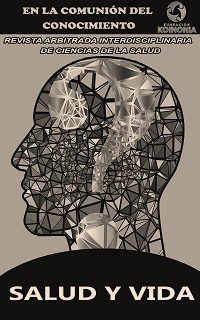Training nurses in the management of implantable catheters in oncology patients
DOI:
https://doi.org/10.35381/s.v.v7i1.3633Keywords:
Catheters, indwelling, catheter-related infections, catheter obstruction, (Source: DeCS)Abstract
Objective: to determine the level of knowledge of nurses regarding the management of implantable catheters in oncology patients at the Hospital Julio Enrique Paredes, SOLCA Núcleo Tungurahua - Ecuador. Method: observational descriptive. Results and conclusions: According to the results obtained it is concluded that the level of knowledge of nurses regarding the management of implantable catheter in oncology patients in the Hospital Julio Enrique Paredes, SOLCA Núcleo de Tungurahua is medium with 44%, possibly due to the lack of formal training by the institution for the acquisition of updated knowledge regarding the management of this device and the lack of a procedural protocol that standardizes the process and unifies criteria in the professionals to guarantee the quality of care of the service, allowing the risk of complications to the patient undergoing antineoplastic therapy to be reduced as much as possible.
Downloads
References
Baltazar E, Cedro M, Heredia L. Conocimiento del personal de Enfermería sobre el manejo y cuidado de catéter implantable en el servicio de unidad de terapia intensiva del Hospital Pediátrico Dr. Humberto Notti en el Periodo de 2018 [Nursing staff knowledge on the management and care of implantable catheters in the intensive care unit of the Paediatric Hospital Dr. Humberto Notti in 2018]. Universidad Nacional de Cuyo, Mendoza, Argentina; 2018. https://n9.cl/7b3j9
Guerra JFG, Cassola J, Collado J. Catéter con reservorio totalmente implantables. Experiencia en el Instituto Nacional de Oncología y Radiología [Fully implantable reservoir catheter. Experience at the National Institute of Oncology and Radiology]. SOLCA Ecuador. 2019;8(4).
Choque R. Cumplimiento de las intervenciones de enfermería en el manejo del catéter venoso central con reservorio, servicio de oncología, Hospital Seguro Social Universitario La Paz, 2018 [Compliance with nursing interventions in the management of central venous catheter with reservoir, oncology service, Hospital Seguro Social Universitario La Paz, 2018]. Universidad Mayor San Andrés, La Paz, Bolivia; 2019. https://n9.cl/l6hg0
Chávez G. Implementación del protocolo de inserción y de manejo del CVC de larga permanencia totalmente implantable; estudio de los factores de riesgo y complicaciones, en los pacientes pediátricos Hospital Oncológico Solón Espinoza Ayala SOLCA Quito [Implementation of the protocol for insertion and management of the fully implantable long-stay CVC; study of risk factors and complications in paediatric patients Solón Espinoza Ayala Oncology Hospital SOLCA Quito]. Repositorio Universidad Internacional del Ecuador; 2017. https://n9.cl/rc1j4
Carrillo A, Martínez P, Taborda S. Aplicación de la Filosofía de Patricia Benner para la formación en enfermería [Application of Patricia Benner's Philosophy for Nursing Education]. Revista Cubana de Enfermería. 2015;34(2).
Merlicco D, Lombardi M, Fino MC. PICC-PORT: Valid indication to placement in patient with results of extensive skin burns of the neck and chest in oncology. The first case in the scientific literature. Int J Surg Case Rep. 2020;68:63-66. https://doi.org/10.1016/j.ijscr.2020.02.028
Lasagni D, Nosadini M, Molinari AC, et al. Systemic Catheter-Related Venous Thromboembolism in Children: Data From the Italian Registry of Pediatric Thrombosis. Front Pediatr. 2022;10:843643. https://doi.org/10.3389/fped.2022.843643
Kartsouni V, Moschouris H, Bersimis F, et al. Complications of Totally Implantable Central Venous Catheters (Ports) Inserted via the Internal Jugular Vein Under Ultrasound and Fluoroscopy Guidance in Adult Oncology Patients: A Single-Center Experience. Cureus. 2022;14(7):e27485. https://doi.org/10.7759/cureus.27485
Caponi IM, Pacheco PQC, da Silva LR, da Souza SR. Estrategias de prevención de la obstrucción en catéteres centrales totalmente implantados en pacientes oncológicos [Strategies for preventing obstruction in fully implanted central catheters in cancer patients]. Enferm. glob. 2020;19(60):483-524.
López Briz E, Ruiz Garcia V, Cabello JB, Bort Martí S, Carbonell Sanchis R. Heparin versus 0.9% sodium chloride locking for prevention of occlusion in central venous catheters in adults. Cochrane Database Syst Rev. 2022;7(7):CD008462. https://doi.org/10.1002/14651858.CD008462.pub4
Almeida BM, Moreno DH, Vasconcelos V, Cacione DG. Interventions for treating catheter-related bloodstream infections in people receiving maintenance haemodialysis. Cochrane Database Syst Rev. 2022;4(4):CD013554. https://doi.org/10.1002/14651858.CD013554.pub2
Lopes D, Almeida R, Da Silva M. Cuidados de enfermería en pacientes oncológico portador de catéter totalmente implantado [Nursing care for oncology patients with a fully implanted catheter]. Vittalle. Revista de Ciências da Saúde. 2019;31:52-60.
Vela S. Intervención oportuna de enfermería en el manejo de catéter central de larga permanencia en pacientes con cáncer en el Hospital Oncológico SOLCA Riobamba [Timely nursing intervention in the management of long stay central catheters in cancer patients at the SOLCA Riobamba Oncology Hospital]. Universidad Reginoal Autónoma de los Andes, Ambato, Ecuador; 2016. https://n9.cl/15xoo
Kehagias E, Tsetis D. The L-shaped tunneling technique: a modified technique facilitating a more discreet implantable port positioning. J Vasc Access. 2016;17(2):195-199. https://doi.org/10.5301/jva.5000496
Kehagias E, Tsetis D. The Arm-to-Chest Tunneling technique: A modified technique for arm placement of implantable ports or central catheters. J Vasc Access. 2019;20(6):771-777. https://doi.org/10.1177/1129729819826039
Published
How to Cite
Issue
Section
License
Copyright (c) 2023 Mariela Murga-Santos, Lupita Melania Armijos-Campoverde, Ariel José Romero-Fernández, Diego Pinto-Fernández

This work is licensed under a Creative Commons Attribution-NonCommercial-ShareAlike 4.0 International License.
CC BY-NC-SA : Esta licencia permite a los reutilizadores distribuir, remezclar, adaptar y construir sobre el material en cualquier medio o formato solo con fines no comerciales, y solo siempre y cuando se dé la atribución al creador. Si remezcla, adapta o construye sobre el material, debe licenciar el material modificado bajo términos idénticos.
OAI-PMH: https://fundacionkoinonia.com.ve/ojs/index.php/saludyvida/oai.









